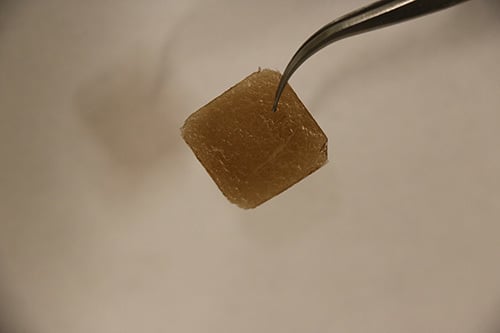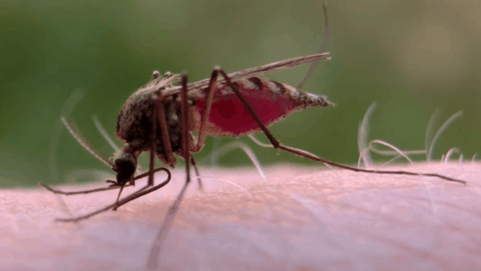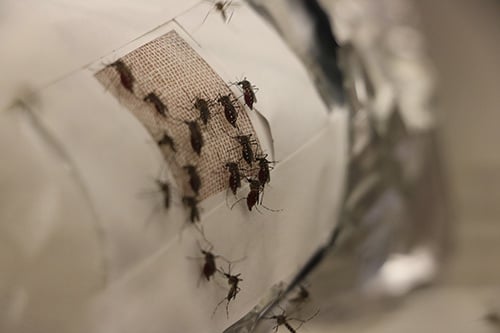The closing ceremony of the PyeongChang Winter Olympics in 2018, the temperature is very low. The performer of “Beijing 8 Minutes” completed the performance task satisfactorily under low temperature conditions.
The smart materials that help them withstand the cold weather are graphene. It is the thinnest but hardest nanomaterial in the world. It is almost completely transparent and absorbs only 2.3% of light. Its thermal conductivity is as high as 5300 W/m·K, which is higher than that of carbon nanotubes and diamond.

The combination of graphene materials and textiles meets the requirements of wearing, and also has certain characteristics of graphene. For example, the intelligent heating suit on the Winter Olympics has the characteristics of graphene super high thermal conductivity. In addition, clothing made of graphene material has anti-inflammatory and antibacterial effects.
A recent study by Brown University has come up with an interesting point of view – graphene materials prevent mosquito bites.
In a paper published in the Proceedings of the National Academy of Sciences, researchers say that graphene can prevent mosquito bites on two levels.
Graphene is a thin, strong material that acts as a barrier to mosquito penetration, a physical barrier against mosquito bites. And the experiments of Brown University researchers have shown that graphene can block mosquito perception of proximity to food. – The chemical signal of the blood, thereby suppressing the impulse of mosquito bites. The research results show that in addition to being able toPhysical anti-mosquito, clothing made of graphene may also have the effect of chemical anti-mosquito.

▲ Dry graphene film prevents mosquito bites
Robert Hurt, professor of engineering at Brown University, said: “Mosquitoes are one of the most important mediators of disease worldwide. People are interested in non-chemical anti-mosquito bites… We have been studying graphene as a blocking toxic chemistry The barrier to matter begins to consider the other benefits of graphene. Now we think graphene may also prevent mosquito bites.”
In order to verify his guess, the researchers also recruited some participants to experiment. For science, these participants are willing to bite a few mouthfuls by mosquitoes. Their arms are placed in a mosquito-filled cage with only a small piece of skin for mosquito bites. PS: Mosquitoes are cultivated in the laboratory, so it can be confirmed that they are not carrying bacteria.

The researchers compared the number of times the participants had bare skin, covered skin, and a layer of graphene oxide (GO) film on the cloth was bitten by mosquitoes. Graphene oxide is a graphene derivative that can be made into a sufficiently large film for practical applications.
The final results were in line with the researchers’ assumptions. Exposed skin and skin covered only with coarse cloth were very easy to bite, while the arm covered with graphene oxide film successfully escaped the mosquito needle.
“With graphene, mosquitoes don’t even fall on the skin – they don’t seem to care about human skin and blood at all.” Cintia Castillho, a Ph.D. student at Brown University and the lead author of the study, thought that graphene was a A physical barrier that blocks mosquitoes from penetrating the skin through the barrier, preventing mosquito bites. But after this experiment, she thought that graphene is also a chemical barrier that prevents mosquitoes from perceiving people (food) there.

▲ There are not many mosquitoes in the confined space
In order to prove that graphene is also a chemical barrier, the researchers applied some human sweat to the graphene film. After applying the human sweat, the mosquitoes begin to gather in this area, just as they gather on the bare skin of the person.
Other experiments have shown that graphene oxide has puncture resistance, but this is conditional. In the case where the graphene oxide film remained dry, the researchers replaced the mosquitoes with a needle and simulated the mosquitoes by computer.The process of biting was performed to perform a puncture experiment. But mosquitoes simply can’t produce enough power to pierce graphene oxide.
However, when graphene oxide is wetted by water, mosquitoes are easily pierced by it. Experiments have shown that mosquitoes can pierce graphene oxide in a humid environment. Of course, a graphene oxide (rGO) with a lower oxygen content can hold the mosquito’s puncture force when it is dry and wet.

▲ Image from: giphy
At present, the focus of using graphene oxide materials to prevent mosquito bites is to maintain material stability. After all, the clothes are very susceptible to sweat, and the wet graphene oxide will become easily pierced, unable to play the role of a physical barrier, and the presence of sweat can not exert the chemical barrier of graphene oxide.
But in general, this study shows that well-designed graphene oxide can be used to make anti-mosquito clothing, and its material has the dual protection against mosquito bites. For those who are very vulnerable to mosquito bites, now may wish to replace all the clothes with this anti-mosquito material.

▲ Image from: The Simpsons